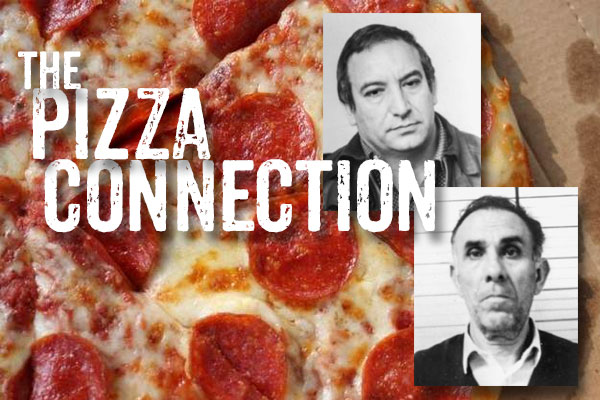
This FBI history article appeared in the May 2016 issues of The Grapevine, published by the Society of Former Special Agents of the FBI. The article was written by Charles J. Rooney (FBI 1970-2006) and Lewis D. Schiliro (FBI 1975-2000).
The Pizza Connection (pdf)
The FBI received concurrent jurisdiction to investigate Title 21 (narcotics violations) in 1982. This was a year that we were seeing an epidemic of drug abuse throughout the country, especially impacting the large cities. New York in particular was experiencing a surge in heroin deaths, with an estimated addict population of 400,000. Murders in New York City that year exceeded 1,600 and were rising; many of them were attributed to the illicit drug trade.
At the time the Bureau was tasked to enter the “war on drugs,” there was great debate both in the Field Offices and at FBIHQ as to what exactly that role should be. There were many concerns as to the amount of resources that would be taken away from other investigative programs, whether we were equipped to deal with the dynamics of working narcotics cases and most importantly, how all this would be coordinated with the existing federal law enforcement agencies. There were even some within the FBI who felt that getting enmeshed in this battle would be a huge mistake.
As the debate took shape in the New York Office (NYO), several things began to emerge. It became clear that as the Bureau became a part of this effort, we needed to find a place where our investigations would make a difference and have an impact in reducing the incidence of drug trafficking and the violence that follows. The NYO also needed to ensure that the effort be focused, so as not to become something that would diminish other important investigative programs.
It is important to note several factors that were occurring in the FBI in 1982. The Bureau was beginning to have significant impact in working cases against La Cosa Nostra families throughout the United States. We were also adjusting to working with the RICO statute and attacking the families as an organized criminal enterprise under the terms contained in the statute. The use of informants, undercover operations and eavesdropping orders under Title III were proven to be invaluable in this program. Our Agents and the Bureau’s leadership also recognized the value of long-term and focused investigations.
In this context, it became clear that the greatest contribution the FBI could make in reducing the devastation of drugs would be to apply the lessons learned in the Organized Crime program and apply that to large-scale drug trafficking organizations. As the discussion continued in
the NYO, a decision was made to develop the connection between the New York Bonanno LCN family members and their connection to Sicilian-based heroin traffickers. This was the beginning of a case that ultimately became known as the “Pizza Connection.” . . . . (read the rest of the article)
You must be logged in to post a comment.